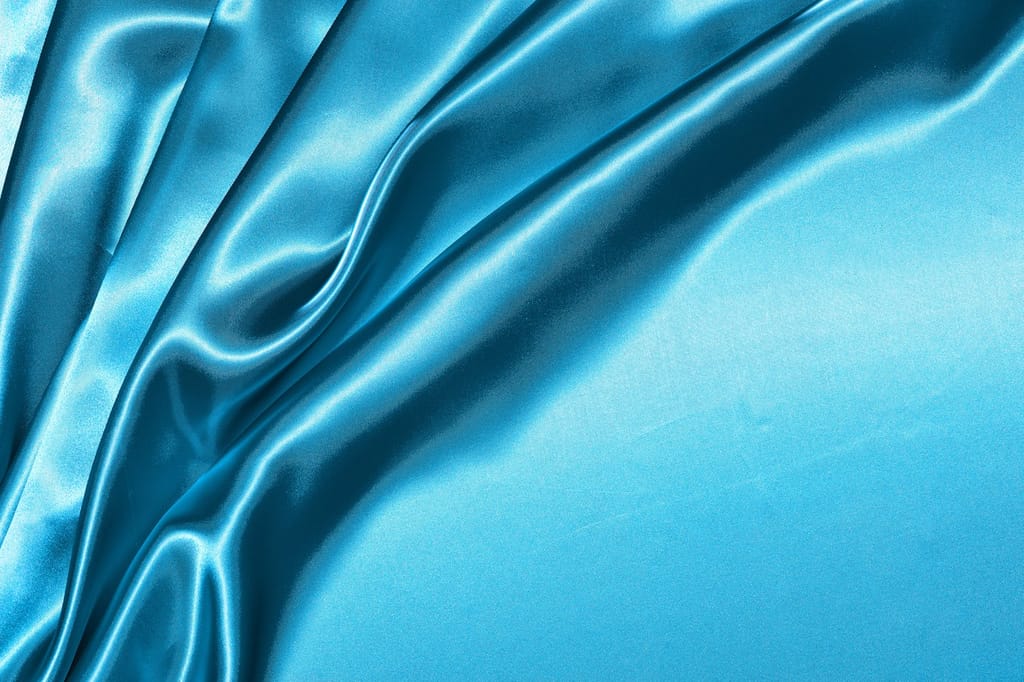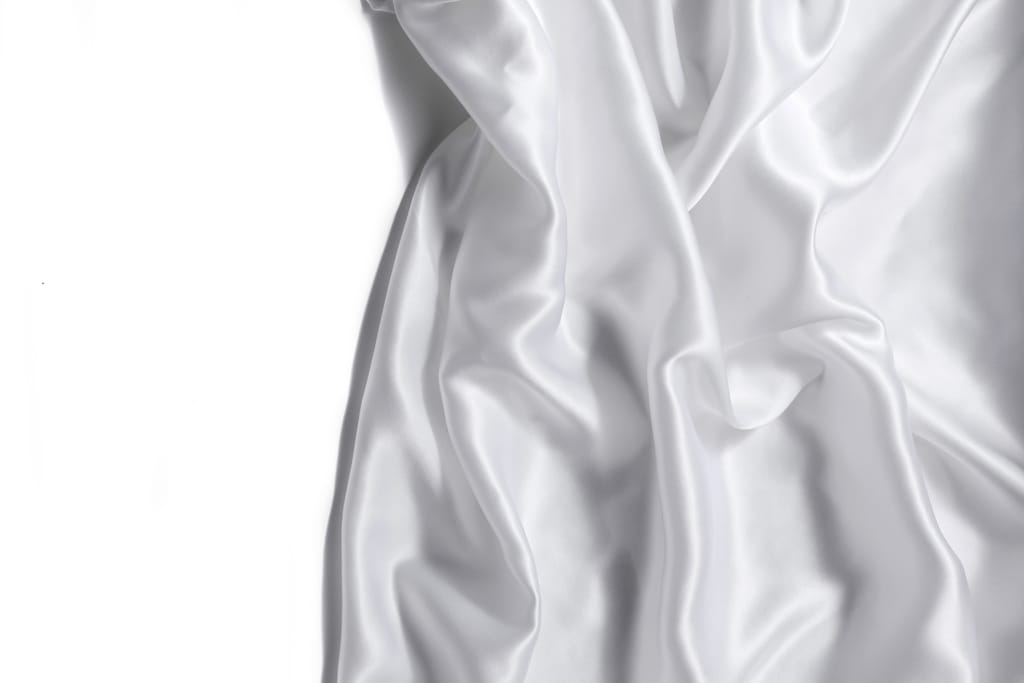What is silk?
Silk is a natural protein fiber, some forms of which can be woven into textiles. It is produced by certain insect larvae to form cocoons, which are then harvested to create the luxurious fabric. The fiber has been used for centuries to create clothing, bedding, and other items that require a soft and strong material. It is also used in the medical field as a lightweight, soft and breathable fabric for surgical use. The fabric is highly prized for its unique qualities, such as its smoothness, shine, strength, and durability.
How is silk produced?
Silk is a luxurious fabric made from the cocoons of the silkworm. Transforming these cocoons into fine fabrics is known as sericulture.
Sericulture involves three stages: raising the silkworms, harvesting the cocoons, and reeling and weaving the silk. During the first stage, they feed these caterpillars a special mulberry leaves, which allows them to grow and eventually form their cocoons. Once the caterpillars are grown, the cocoons can be harvested. This leads to the second stage of the process, which is harvesting the cocoons. Harvesting is done by boiling them in hot water and exposing them to steam or air to release the silk fibers. The cocoons are then soaked in a mild soap solution to help loosen the fibers, which are then unwound by hand. The third stage consists of reeling and weaving the fibers, which are then spun into a thread on a spinning wheel. The thread is then woven on a loom to form the fabric. The fabric is then washed and dyed to produce the desired color and texture.
The process of sericulture is an age-old practice that has been used for centuries to produce luxurious fabrics.

The History of Silk
Silk is one of the most ancient materials used by humans and has been produced for at least 5,000 years. Originating in China, it was historically used as a luxury fabric and was a major factor in the development of global trade. As its production spread throughout the world, so too did its influence, resulting in an extensive history of exchange and innovation.
Silk is made from the thread-like fibers of the cocoon of the Bombyx mori, a species of silkworm. Harvesting cocoons involves boiling them in order to loosen the thread and then spinning it into a continuous thread. This thread can then be woven into various fabrics, such as satin, chiffon, and velvet.
The production of silk was first developed in China during the Shang Dynasty (1600-1046 B.C.), and it soon became a highly sought-after commodity. The Chinese kept the production of silk a closely guarded secret to maintain their monopoly on the market. The material eventually found its way to the West via the Silk Road, a network of trade routes connecting East Asia and the Mediterranean. The Silk Road was a key factor in the development of global trade, facilitating the exchange of goods and ideas between East and West.
The Silk Road also allowed for the spread of religions, including Buddhism and Christianity, and new technologies, such as paper-making and the compass. In the 16th century, the Portuguese established a trading post on Macau, allowing them to monopolize the trade of Chinese silk with Europe. They soon learned how to produce silk themselves, allowing them to export the material to other parts of the world. The French, in particular, became experts in silk production and developed a thriving silk industry in Lyon. Today, silk continues to be a major player in international trade. China produces most of the silk in the world today. However, countries such as India, Indonesia, and Thailand have also become substantial producers of silk.
Silk is now used in a variety of industries, from fashion to home furnishings. Throughout its long history, silk has proven to be a versatile and durable material, capable of withstanding the test of time and international trade. We have felt its influence in both the East and the West, and its impact on global trade is undeniable.

Varieties of Silk
Silk is a luxurious fabric that has been treasured since ancient times. It is made from the natural fiber produced by the silkworm and has been used to make a wide variety of garments and other items. There are many varieties of silk, each with its own unique characteristics and properties.
Mulberry silk is the most popular type of fabric used for clothing, bedding, and other textile products. It is strong and has a soft, smooth feel that makes it comfortable to wear. Mulberry is also highly absorbent and can be dyed in a variety of colors.
Tussah silk is a wild silk made from the cocoons of non-mulberry silkworms. It is coarser and stiffer than the mulberry variety, and it has a more irregular texture. It is often used to make sturdy and durable items, such as rugs and upholstery fabrics.
Eri silk is a type of wild silk made from the cocoons of eri silkworms. It is very strong and has a matte finish that gives it a unique look. It is often used to make shawls and saris, as well as other accessories.
Bombyx silk is another type of fabric made from the cocoons of mulberry silkworms. It is soft and lightweight, making it ideal for delicate garments and lingerie. Bombyx silk is also absorbent and easily dyed in a variety of colors.
Ahimsa silk is a type of wild fabric made from the cocoons of the ahimsa silkworm. It is very soft and lightweight, making it ideal for scarves, shawls, and blouses. Ahimsa silk is also absorbent, and we can dye it in a variety of colors.
Tasar silk is a type of wild silk made from the cocoons of tasar silkworms. It is strong and durable, making it ideal for rugs and upholstery fabrics. It is also absorbent and can be dyed in a variety of colors.

Care and Maintenance Tips
To ensure your silk garments and accessories last for years, here are some tips for proper care and maintenance.
- Read the care label of your silk items. Different textiles requires different cleaning procedures, so it’s important to follow the instructions given.
- When washing your silk items, use only lukewarm water and a mild detergent. Avoid using chlorine bleach and fabric softener, as these can damage the fibers of the fabric. If you opt for hand-washing, be sure to rinse your luxury items twice, as any soap residue can cause yellowing and discoloration.
- When drying your items, never wring them out or twist them, as this can stretch the fabric. Instead, roll the item in a towel and press to remove excess water, then lay it flat on a clean towel to dry. If you need to machine wash your silk items, use a gentle cycle with a low spin speed, and place them in a mesh laundry bag or pillowcase to protect them from snags and tears.
- It’s best to air-dry your items if possible. Heat can damage the textile, so it’s best to avoid using a dryer. Besides washing, it’s important to store your items properly. Avoid hanging them in the closet, as this can cause stretching and misshaping. Instead, fold them in a drawer or lay them flat on a shelf. To protect them from moths and other pests, use cedar blocks or sachets filled with lavender or rosemary.
- If you ever need to have your silk items dry cleaned, tell the dry cleaner about the nature of the items. This will ensure that they take the proper precautions to avoid damage.
Conclusion
The unique properties of silk make it an valuable material. Not only is it lightweight, strong and durable, but it is also hypoallergenic, breathable, and has a luxurious feel and drape. Its versatility makes it ideal for a range of uses, from clothing to bedding to upholstery and more. As a natural material with a long history, silk will remain popular for generations to come.
Reference
- Several Silk Types You Need to Know. (n.d.). https://www.lilysilk.com/us/types-of-silk
- Shirley, H. (2022, July 13). What is Silk? Origin, How its is Made, Types & Benefits. SILKUP. https://silkup.com/blog/what-is-silk-the-complete-guide/
- Threadcurve Editorial Staff. (2021, June 7). 10 Different Types of Silk Fabric. ThreadCurve. https://threadcurve.com/types-of-silk-fabric/
- Wikipedia contributors. (2023, February 26). Silk. Wikipedia. https://en.wikipedia.org/wiki/Silk